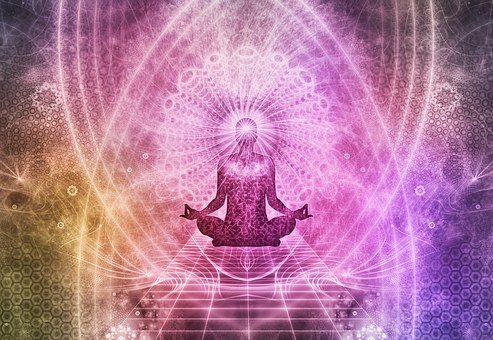How was Shiism born?
From the beginning of Islam, the Shiites are those who recognize Ali, cousin of the Prophet Mohammed and husband of his daughter Fatima, as its sole legitimate successor. They thus oppose the Sunnis, supporters of Abu Bakr, companion of the prophet, who will become the first caliph of Islam. For Shiites, Ali is considered both a temporal leader and a spiritual guide. It is up to him to ensure the political succession of the prophet, but also to deploy the hidden meaning of the revelation contained in the Koran.
Ali will experience an unfortunate destiny. After being removed from power, he became the fourth caliph of Islam, before being assassinated in 661 AD. J.-C. If he loses the political power, his spiritual figure will be gradually exalted and venerated, to the point of taking on an almost divine dimension. “Around the figure of Imam Ali is constituted a real religion” (1), explains Mohammad Ali Amir-Moezzi, an Islamologist specializing in Shiism. In such a way that “Shiism is the religion of the imam, as Christianity is the religion of Christ”.
What is the imamate?
In Twelver Shiism, the majority in the world and in power in Iran, twelve imams continue the succession of the Prophet Mohammed, on the temporal and spiritual, or exoteric and esoteric planes. After Ali, the first imam, none of them exercised political power. Hussein, the third Imam, was defeated at Karbala in 680, where he faced the armies of the Umayyad Caliph Yazid with only seventy men.
From this massacre was born the figure of the martyr, central to Shiism, of which Hussein became the emblem. “The tragedy of Kerbala is the subject of tragic epics, and becomes a founding event of Shiism”summarizes Mathieu Terrier, researcher at the CNRS and specialist in Shiite Islam.
After the death of Hussein, the imams, watched and victims of persecution by the caliphal power, lead a more confidential life and without political influence. While their historical trajectory is marked by weakness and helplessness in the face of events, the spiritual aura of the imams grows. Their writings and their teachings are compiled in collections of hadiths (sayings of the prophet, his family and the imams).
“It is from these words that the figure of the imam is constructed as divine guide, whose mission is to deliver the spirit of revelation”, continues Mathieu Terrier. Theophanic figure, manifesting the attributes of God, the imam is considered infallible and impeccable (ma’ṣūm)that is, he has knowledge and cannot sin.
The twelfth imam is a messianic figure. First hidden to escape persecution, the so-called Mahdi disappeared definitively in 941 AD. J.-C., during an event called “the major occultation”. Always present, but hidden, he will return at the end of time, according to sacred Shiite history, to “cover the earth with righteousness “. In this final manifestation, “The Mahdi will triumph over all his enemies and display the power that all previous imams lacked”says Mathieu Terrier.
This historical revenge also has a spiritual dimension, since it is during this event that the hidden meaning of the revelation, of the Koran but also of the Gospels and the Torah will be fully revealed. “It is the fulfillment of the imamate”continues the researcher.
In the 13th and 14th centuries, gnosis was born (‘irfan), a current of thought that will revive the esoteric dimension of Shiism. Scholars, the Gnostics, took up the teachings of the imams and gave them a more rational framework, relying on Hellenistic philosophy and Sufism. With them, “Shiism becomes a religion of spiritual self-perfection”develops Mathieu Terrier.
How does this manifest itself in practice?
The Shiites go to visit the imams by going on pilgrimage to their tomb. “These sacred figures are considered as intermediaries to connect with the divine, to intercede with God at the time of the last judgment, or to grant wishes”explains Sabrina Mervin, historian and anthropologist of contemporary Shiism.
During the Arbain pilgrimage, about 15 million Shiites, mainly from Iraq and Iran, flock to the sanctuary of Karbala, in Iraq, forty days after Ashura, the date of the commemoration of the martyrdom of Hussein.
During Ashura celebrations or the Arbain pilgrimage, believers commemorate the death of Hussein at the battle of Karbala, and “feel immense sorrow to have lost an imam and his family in these conditions”explains Sabrina Mervin. “They identify with these figures, and cry as if their death had taken place yesterday. »
The staging of this battle through physical reconstructions, or through stories, helps this process of empathy. Among the Shiites, “Crying leads to heaven”analyzes Sabrina Mervin.
Sorrow is also mixed with hope. “We mourn the loss of Hussein, but practitioners are also waiting for the reappearance of the Mahdi”, describes the researcher. These pilgrimages are also great moments of conviviality and fraternity between believers, which allow “recharging the batteries of faith. »
Certain dimensions of Shiism do not fail to evoke Catholicism. Thereby “like Catholicism, Shiism is a religion of flesh and blood”, underlines Sabrina Mervin, who considers for example that representations of Hussein, bloody, are reminiscent of the story of the Passion of Jesus.

